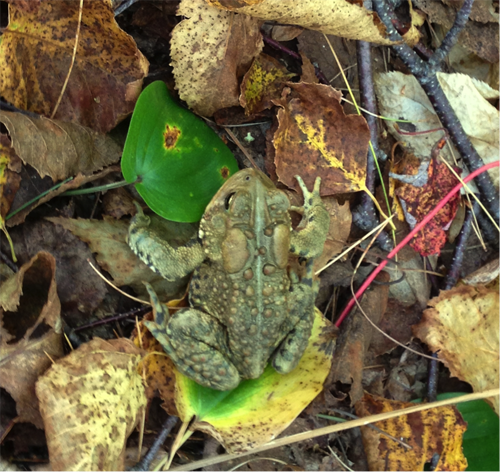Summer’s Here

by Esperanza Stancioff
I found this little guy on a hike in Camden Hills last summer. It was a thrilling experience and a rare occurrence for me. I remembered my mom telling me as a child that I would get warts from handling them—which is not the case. The American toad does produce a toxin in glands behind its eyes that can be harmful to our pets and us; yet for the toad, the toxin provides protection. This clever fellow will also puff itself up to look bigger for predators that aren’t affected by the toxin.
So far, this season I have seen three toads in three weeks in three different locations on my property. I wondered if these discoveries related to my developing awareness due to our Signs of the Seasons Program where observers document the timing of life cycle changes of plants and animals in their backyards and communities. So, what is the state of the population of American Toads and other amphibians in Maine?
This started me thinking more about the American toad and what changes to look for—its life cycles, or phenology. I wondered: When do mating calls begin? When are eggs laid? Phenology science has provided critical baseline data as well as ongoing documentation of changes in the natural world. This has been some of the best evidence we have about the extent of the impacts of a changing climate across the globe.
I don’t know the answer to my earlier question about amphibian populations, including the toad in Maine, but citizen science is a great way to find out.
For more information about how you can observe plants and animals to document changes in your backyard or community, please check out our website: http://umaine.edu/signs-of-the-seasons/ We have added the American toad and two frogs this year to our list of 20 possible species to observe.
